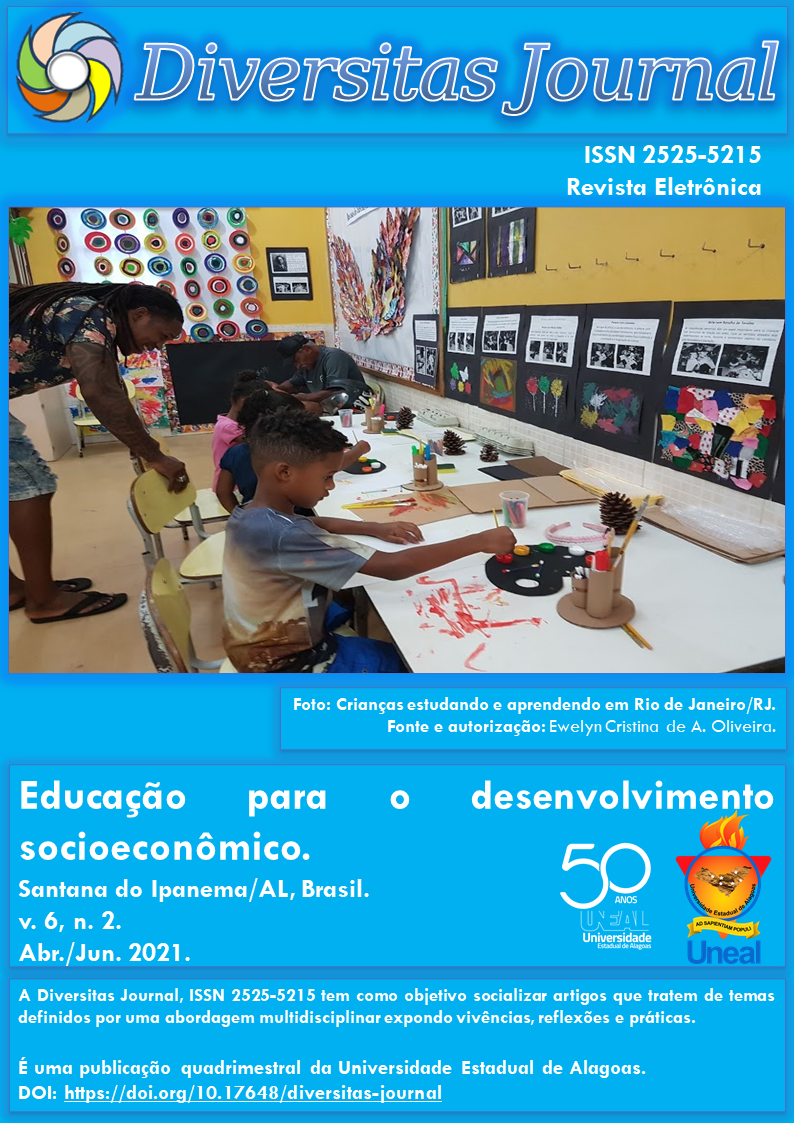Diagnóstico da Arborização Urbana das principais vias públicas dos bairros Camoxinga e Monumento no município de Santana do Ipanema, AL, Brasil
DOI:
https://doi.org/10.17648/diversitas-journal-v6i2-1565Abstract
ABSTRACT: Urban afforestation is a theme of great importance in the planning of the cities, because it provides a balance between the environment and the constructions, improving the quality of life of the population. The objective of this work was to inventory the urban vegetal composition of Avenida Arsênio Moreira in the Monument neighborhood and Rua Santa Sofia in the Camoxinga neighborhood, Santana do Ipanema - AL, are the main streets of the mentioned neighborhoods. Evaluating the richness of species, their origin (native or exotic), quality of pruning (conflicts with nets), outcrop of the root system and its phytosanitary diagnosis. The data were collected through on-site visits, using the sampling method called quali-quantitative inventory, also called census type inventory. A total of 133 individuals were surveyed, distributed in 8 families and 12 species, of which 1 species was not identified. The two most frequent species were Ficus benjamina L. (Figueira) with 57 individuals, followed by Prosopis juliflora (Sw.) DC. (Algaroba) with 34 individuals. It was notable the predominance of exotic species, in which 8 of the 11 listed species are exotic. In addition, 83 individuals showed a need for pruning, since they were in contact with electric and telephone networks. And 26 individuals had exposed roots, Ficus benmina L and Prosopis juliflora (Sw.) DC, were the ones that presented the most need for pruning, in some cases causing obstructions in sidewalks. In relation to the phytosanitary diagnosis, no species showed the presence of pests. Such results may be useful in the management of the municipality’s traffic afforestation, and may serve as a subsidy to direct future decision-making.
KEYWORDS: Survey. Urban Vegetation. Sertão Alagoano.
Metrics
Downloads
Published
How to Cite
Issue
Section
License
Copyright (c) 2021 Tarcisia Alves da Silva, Alicia Marques Torres, Dacio Rocha Brito

This work is licensed under a Creative Commons Attribution 4.0 International License.
The Diversitas Journal expresses that the articles are the sole responsibility of the Authors, who are familiar with Brazilian and international legislation.
Articles are peer-reviewed and care should be taken to warn of the possible incidence of plagiarism. However, plagiarism is an indisputable action by the authors.
The violation of copyright is a crime, provided for in article 184 of the Brazilian Penal Code: “Art. 184 Violating copyright and related rights: Penalty - detention, from 3 (three) months to 1 (one) year, or fine. § 1 If the violation consists of total or partial reproduction, for the purpose of direct or indirect profit, by any means or process, of intellectual work, interpretation, performance or phonogram, without the express authorization of the author, the performer, the producer , as the case may be, or whoever represents them: Penalty - imprisonment, from 2 (two) to 4 (four) years, and a fine. ”


















